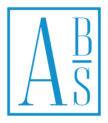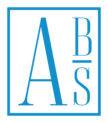Running a small business takes a lot of time and attention to detail. With all the tasks you have on your plate, it’s easy to make mistakes in areas like accounting. But what are some common mistakes that small business owners make? And how can you avoid them? Below are 6 common accounting mistakes small businesses owners make.
Mixing Personal and Business Finances
All business owners need to understand the difference between their personal and business finances. Small businesses operate as sole proprietorships, meaning that there is no legal distinction between your personal finances and your small business, assuming you opened it under your name (e.g., “John Doe”). It’s very easy to commingle both types of finances and get yourself into trouble. Money from the business gets deposited in your personal account, expenses for your business get paid out of your personal account, and taxes (if you neglect to set up a separate bank account) will be filed on your personal tax return.
Applying the Wrong Accounting Method
Most small businesses have to apply one of two accounting methods in order to report their income and expenses. The cash method, which is the simplest method, records transactions when the transaction takes place. For example, when you buy supplies for your business, that purchase will be recorded in the current month’s financial statements because it happened in the current month. The alternative method is the accrual method, which records transactions when they get “invoiced” or billed rather than when you pay for them. For example, if you have a credit card that your business uses to buy supplies, those purchases will be recorded in the month your business pays the bill.
Not Knowing the Difference Between Profit and Cash Flow
It’s essential to understand the difference between a business’ profit and its cash flow. Profit is what remains after all expenses have been deducted from revenue. This number can be found in your financial statements, often on the last line before “net income.” On the other hand, cash flow is how much money your business brings in during a particular period. Cash flow can be found by looking at a summary of your business’ bank account transactions, not just the income and expenses.
Not Paying for Themselves
The main goal of every business is to turn a profit. However, business owners need to understand that their businesses can’t produce income if they constantly spend everything they bring in. A small business owner has to be mindful of how much money they are spending on an ongoing basis to have enough money left over at the end of the month.
Not Keeping Good Records
It’s not enough to just have records; you also have to keep them organized to be accessible when needed. You should always keep your records in a way that makes sense for your business, but it’s essential to take the time every year or quarter to organize them according to whatever system works best. Keeping good financial records can help you spot problems, see your business’s strengths and weaknesses, and identify problems early. That way, you can take steps to fix them before they get out of hand.
Using the DIY Method
While it’s easy to use the do-it-yourself method for accounting, that doesn’t mean it’s always your best option. The DIY method lets you maintain complete control over what gets entered into your books and how things are tracked, but creating accurate financial records can be time-consuming and tedious, especially for businesses with many employees or complex accounting needs.
In conclusion, accountants play a significant role in helping small business owners. Making sure that you and your accountant work well together can be tough but worthwhile for the success of your business.






